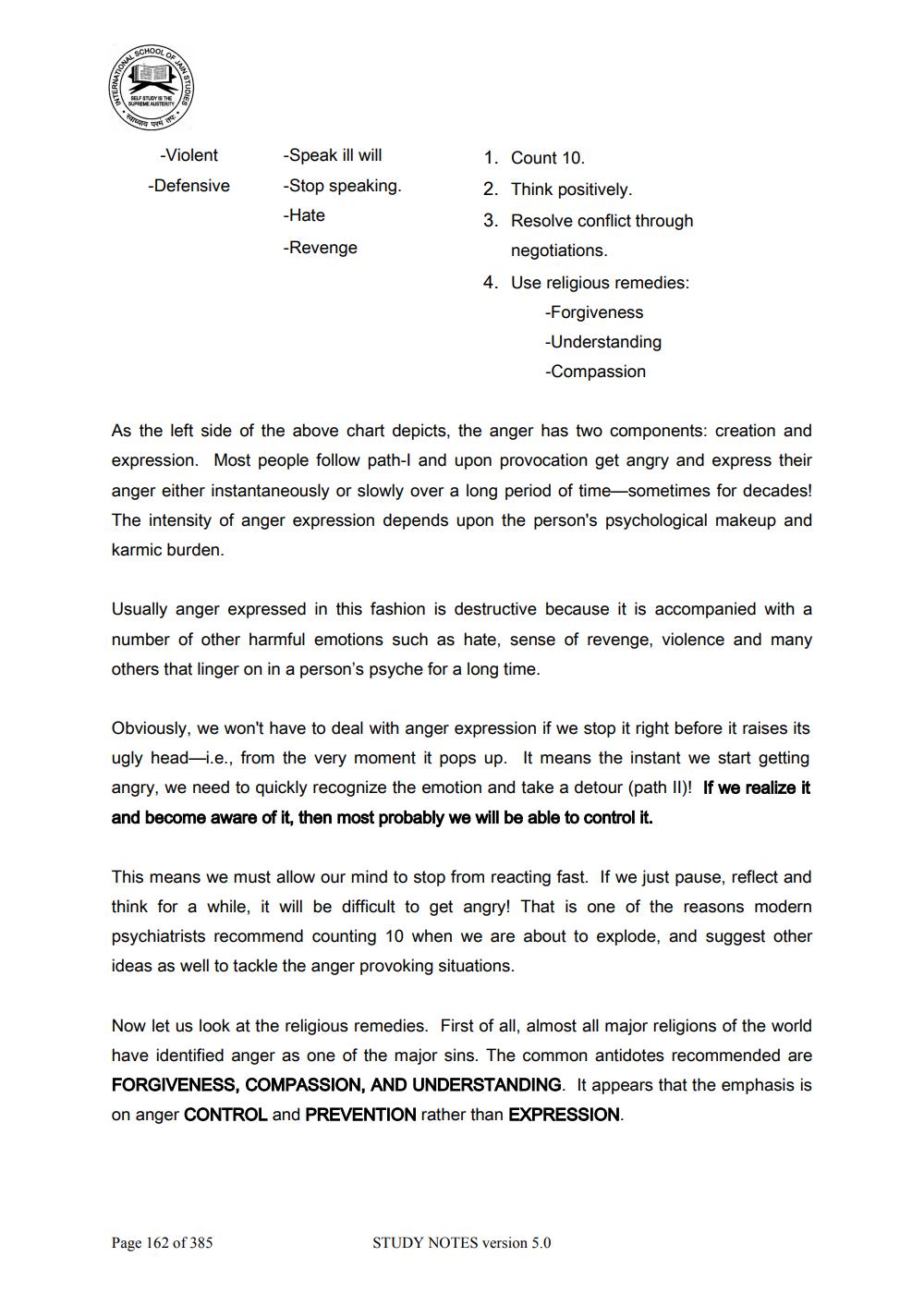________________
INTERNATION
SCHOOL OF
-Violent
-Defensive
-Speak ill will
-Stop speaking.
-Hate
-Revenge
1. Count 10.
2. Think positively.
3. Resolve conflict through
negotiations.
4. Use religious remedies:
-Forgiveness
-Understanding -Compassion
As the left side of the above chart depicts, the anger has two components: creation and expression. Most people follow path-I and upon provocation get angry and express their anger either instantaneously or slowly over a long period of time-sometimes for decades! The intensity of anger expression depends upon the person's psychological makeup and karmic burden.
Usually anger expressed in this fashion is destructive because it is accompanied with a number of other harmful emotions such as hate, sense of revenge, violence and many others that linger on in a person's psyche for a long time.
Obviously, we won't have to deal with anger expression if we stop it right before it raises its ugly head-i.e., from the very moment it pops up. It means the instant we start getting angry, we need to quickly recognize the emotion and take a detour (path II)! If we realize it and become aware of it, then most probably we will be able to control it.
This means we must allow our mind to stop from reacting fast. If we just pause, reflect and think for a while, it will be difficult to get angry! That is one of the reasons modern psychiatrists recommend counting 10 when we are about to explode, and suggest other ideas as well to tackle the anger provoking situations.
Page 162 of 385
Now let us look at the religious remedies. First of all, almost all major religions of the world have identified anger as one of the major sins. The common antidotes recommended are FORGIVENESS, COMPASSION, AND UNDERSTANDING. It appears that the emphasis is on anger CONTROL and PREVENTION rather than EXPRESSION.
STUDY NOTES version 5.0




